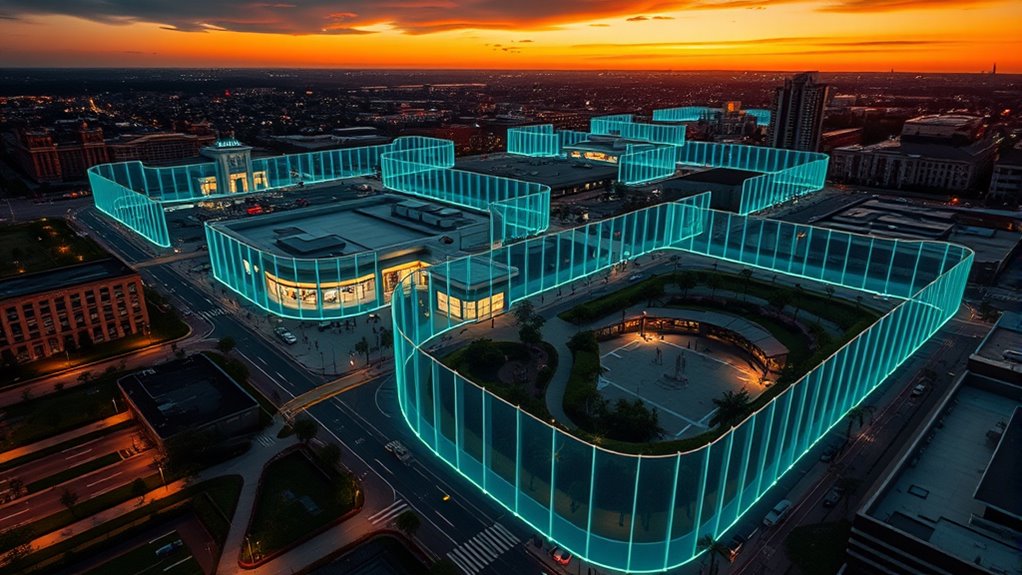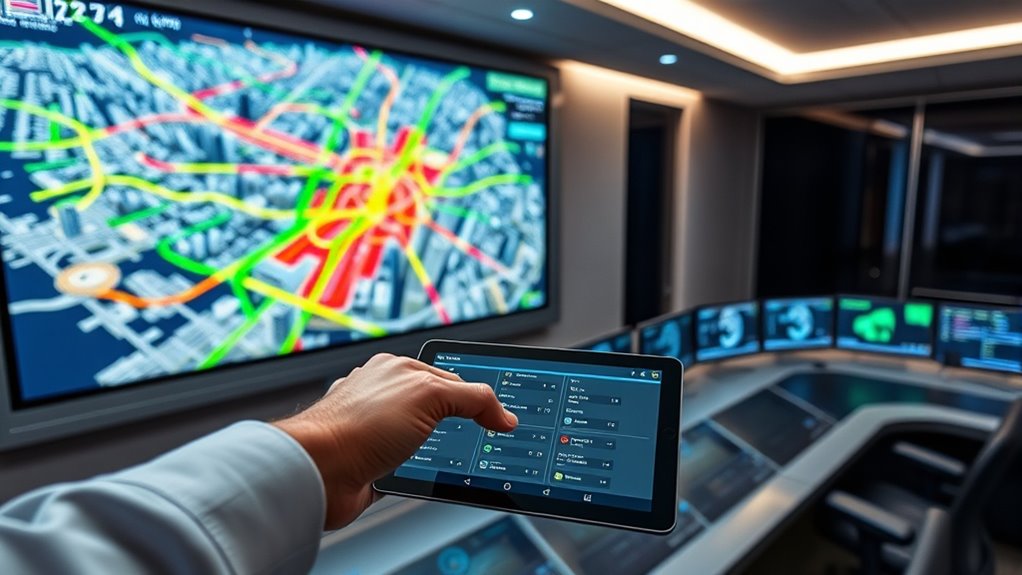When automating geofencing, focus on precise location targeting and personalization to keep users engaged without feeling invasive. Do set clear geofences around specific areas and trigger messages at ideal times. Don’t target overly broad zones or send generic notifications, which can annoy users or cause opt-outs. Always respect privacy by obtaining user consent and transparently explaining data use. For tips on balancing effectiveness and privacy, discover more insights below.
Key Takeaways
- Do use precise geofences around specific locations to ensure relevance and avoid irrelevant notifications.
- Don’t overreach with broad zones that can annoy users or cause opt-outs.
- Do obtain explicit user consent and clearly communicate data collection practices for privacy compliance.
- Don’t neglect personalization; tailor messages based on user context and environment for higher engagement.
- Do regularly monitor and fine-tune geofences to optimize campaign effectiveness while respecting user privacy.

Geofencing automations enable you to create location-based triggers that automatically activate specific actions when you enter or exit designated areas. This technology leverages GPS, RFID, or Wi-Fi data to pinpoint user location, allowing you to target audiences precisely based on where they are. When you set up these automations, you can send personalized messages, offer tailored promotions, or trigger other actions relevant to the user’s current environment. But while geofencing offers powerful marketing advantages, it also raises important considerations around privacy concerns, which you need to address carefully.
One of the key aspects of effective geofencing automation is proper location targeting. You want to ensure that your triggers activate at the right place and time, providing value without overwhelming your audience. For example, if you’re a retailer, setting up a geofence around your store can prompt nearby potential customers with special offers as they walk by. However, overreaching with broad or poorly defined zones can lead to irrelevant notifications, causing annoyance or even opt-outs. Fine-tuning your geofences to precise locations maximizes relevance and engagement, making your campaigns more effective.
Proper location targeting ensures relevant, non-intrusive notifications that boost engagement and campaign effectiveness.
At the same time, privacy concerns are a major factor to consider. Users are increasingly wary of how their location data is collected and used. If your automation seems intrusive or if you don’t clearly communicate how you handle their data, you risk damaging trust and violating privacy regulations. Always obtain explicit consent before tracking someone’s location and provide transparent information about how their data will be used. Give users control over their preferences, such as opting in or out of location-based notifications, to foster a positive relationship. Additionally, understanding the performance kits available for 2024 Accord can help you craft more engaging and relevant messaging around your geofencing strategy.
Additionally, respecting privacy isn’t just about compliance; it’s about maintaining user trust. Implement safeguards like secure data storage and limit data sharing to trusted partners. Avoid overly aggressive geofencing that feels invasive—focus instead on delivering timely, relevant content that genuinely benefits your audience. When you balance effective location targeting with transparent privacy practices, you create a more sustainable and respectful marketing approach.
Frequently Asked Questions
How Accurate Is Geofencing Technology in Different Environments?
You’ll find geofencing accuracy varies with GPS accuracy and signal interference. In open areas with clear satellite signals, it’s quite precise, often within a few meters. However, in environments with tall buildings, dense foliage, or indoor spaces, signal interference can cause inaccuracies, making the system less reliable. To improve precision, consider combining GPS with Wi-Fi or Bluetooth signals, especially in challenging environments.
Can Geofencing Automations Be Integrated With Existing Marketing Platforms?
Yes, you can integrate geofencing automations with existing marketing platforms, but watch out for integration challenges. Compatibility issues may arise due to differing APIs or data structures, so confirm your platforms are compatible before starting. You might need custom development or middleware to bridge gaps. By planning for platform compatibility, you can leverage geofencing automations seamlessly to enhance your marketing campaigns and target audiences more effectively.
What Are the Privacy Concerns Associated With Geofencing Automations?
You need to be aware that geofencing automations raise privacy concerns around user privacy and data security. If you’re not careful, you could unintentionally collect sensitive information or misuse location data. Always make certain you get explicit user consent, secure data with encryption, and adhere to privacy laws. By doing so, you protect your users’ privacy and strengthen their trust, preventing potential legal issues or damage to your reputation.
How Do I Measure the Effectiveness of My Geofencing Campaigns?
To measure your geofencing campaigns’ effectiveness, focus on conversion metrics like click-through rates and in-store visits. Use audience segmentation to identify which groups respond best. Track how different segments interact with your offers, adjusting your strategies accordingly. Analyzing these data points helps you optimize your campaigns, ensuring you’re reaching the right audience and achieving your desired outcomes efficiently.
Are There Industry-Specific Best Practices for Geofencing Automations?
Isn’t it fascinating how industry standards shape your geofencing strategies? You should tailor your automations to your specific industry, considering regional variations that influence consumer behavior. For example, retail campaigns might focus on nearby promotions, while hospitality targets travelers. By aligning your approach with industry-specific best practices, you guarantee your geofencing efforts resonate more deeply, increasing engagement and conversions while respecting regional nuances.
Conclusion
By following these do’s and don’ts, you’ll navigate geofencing automations smoothly, like a captain steering a steady ship through calm waters. Remember to respect your audience’s privacy, keep your messages relevant, and test your setups regularly. When done right, your geofencing efforts can feel as seamless as a breeze, engaging customers without feeling intrusive. Stay attentive, adapt to feedback, and watch your marketing efforts flourish like a well-tended garden.









